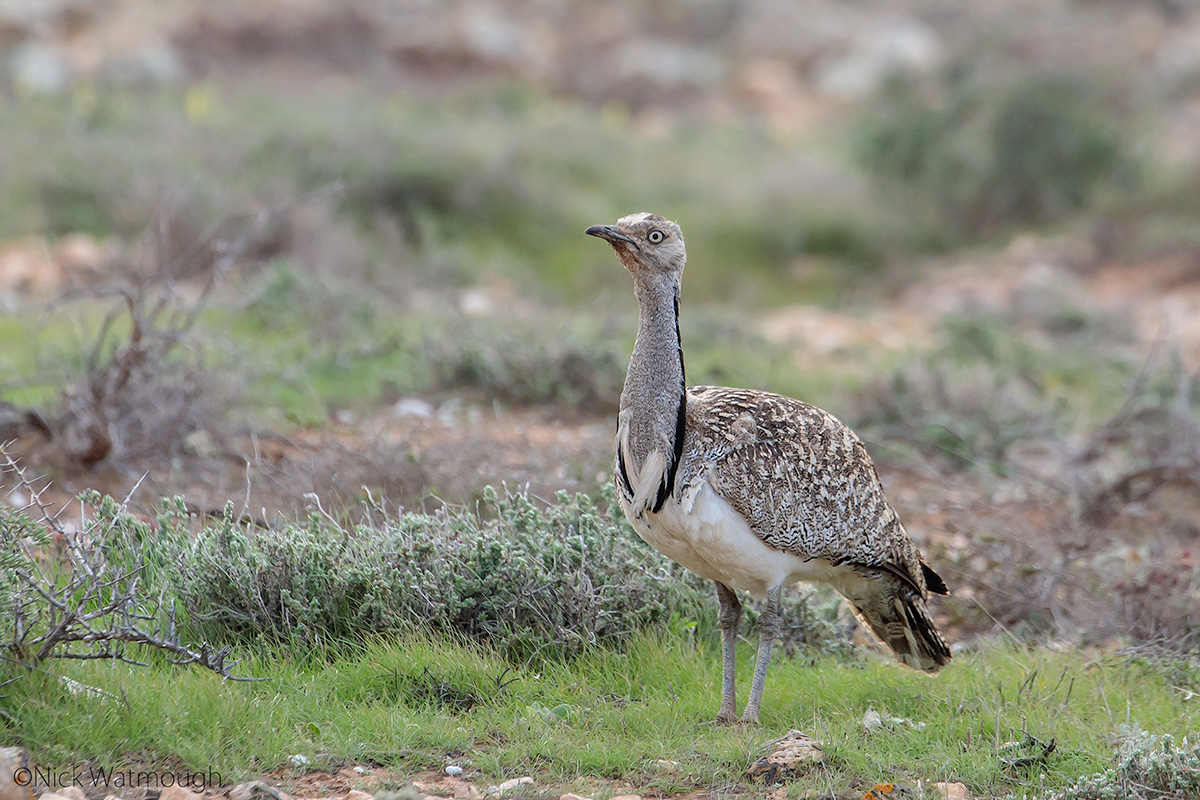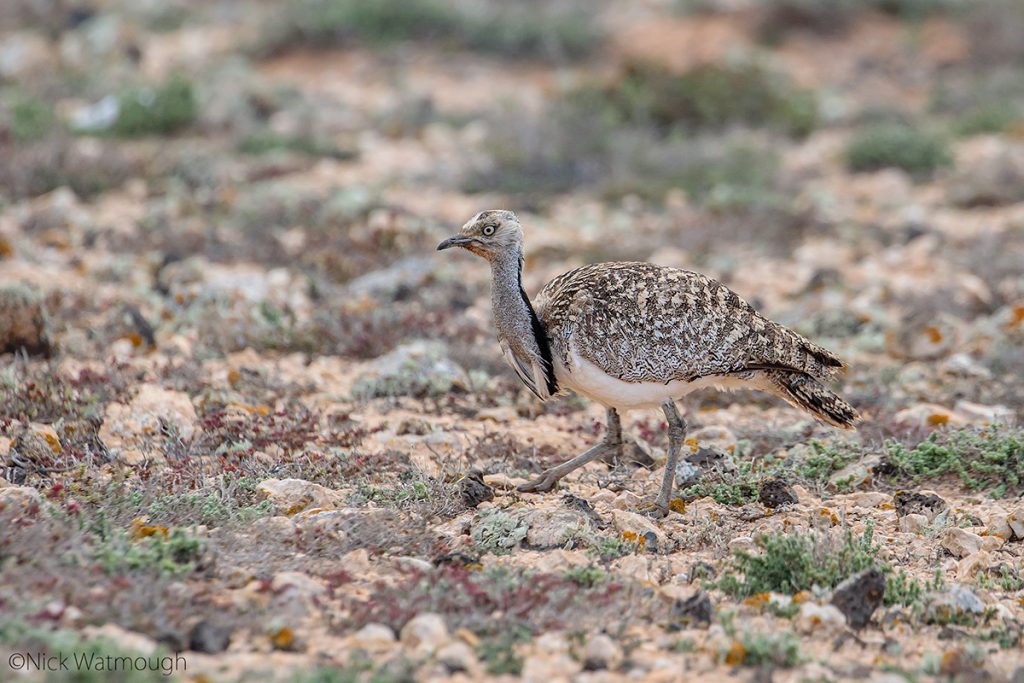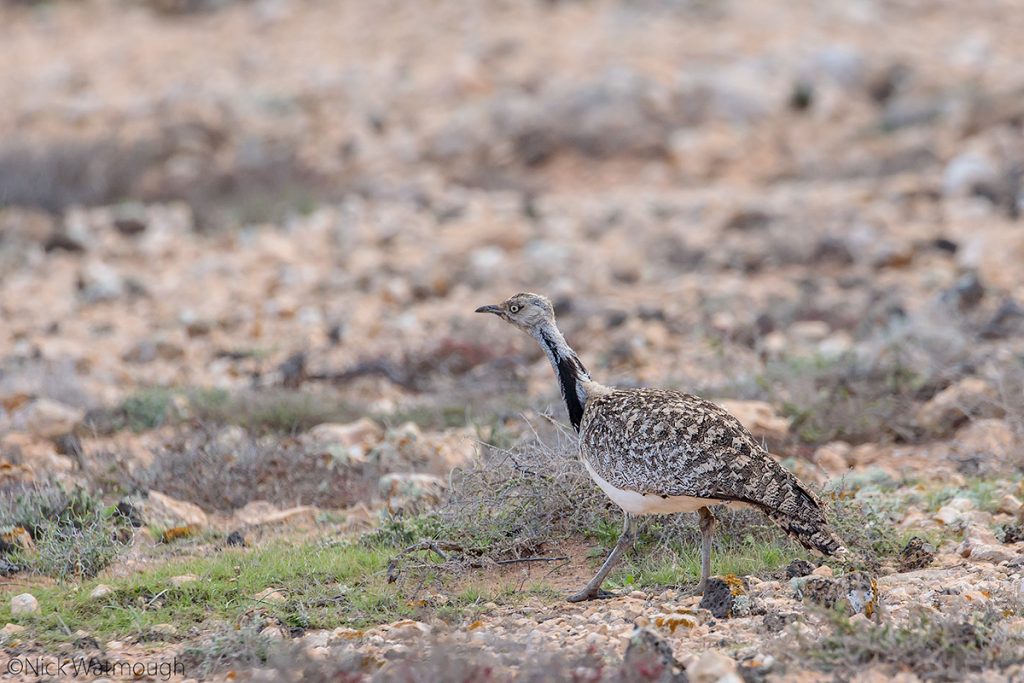When we got up the forecast rain was already in the air. After grabbing a quick breakfast in a Tindaya bar we headed out onto the plains to make the most of the early morning light. A Berthelot’s Pipit was feeding alongside the first rough track we explored, but we saw nothing else and returned to the tarmac when the track petered out.
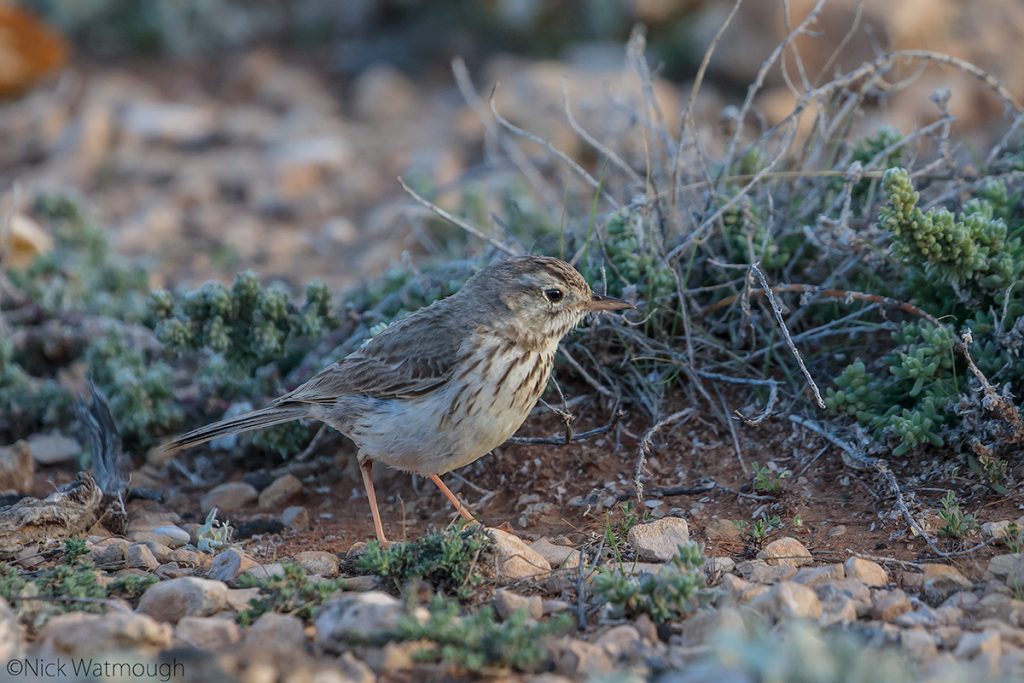
A Great Grey Shrike on a roadside post was typically nervous so we moved on until after a further 500 m we literally tripped over a party of 4 Houbaras; two of which walked across the road in front of us. Taking Robin Chittenden’ s advice we parked the car, used it as a hide and simply allowed one individual to walk towards us until it was quietly feeding just 50m away.
Houbara Bustard of the
After 30 minutes spent feeding our memory cards we reluctantly moved on picked up some provisions and returned to the Barranco de Rio Cabreas for another go at the Dwarf Bittern. Perched up on the side of the gorge we waited for just 40 mins in deteriorating conditions when two recently arrived birders further down the ravine gestured that they could see our quarry. After further gesturing and some frantic triangulation we located the bird and managed a couple of record shots before the heavens opened and we had to retreat to the car.
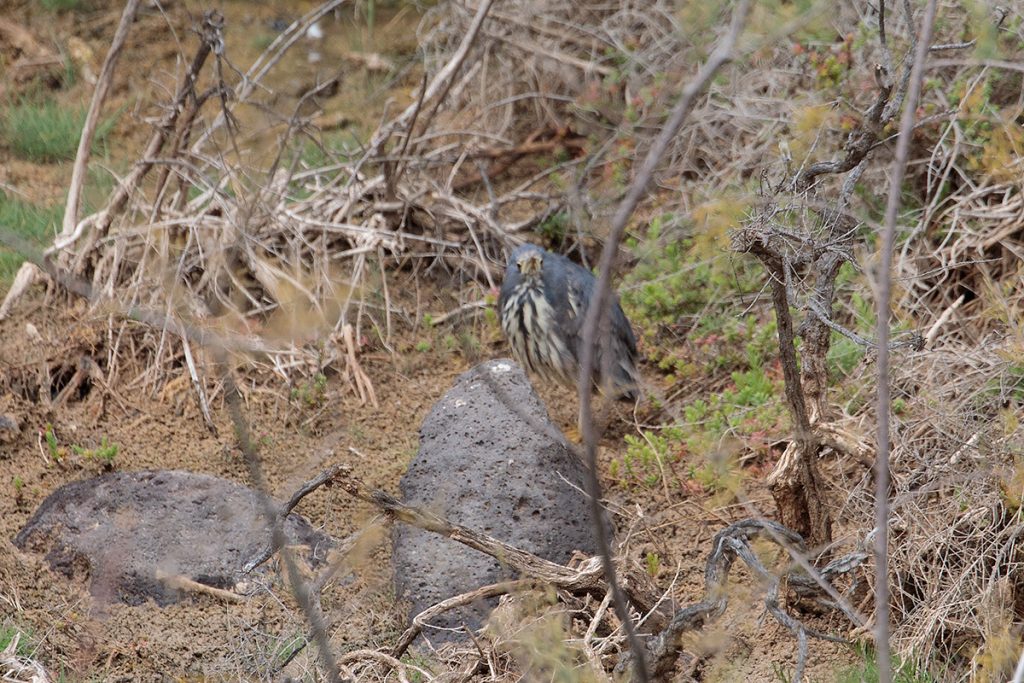

In an attempt to outrun the rain we decided to head South to the wood at Costa Calma and search for wintering passerines, The car heater was turned up to maximum in an attempt to dry outbut when we arrived in Costa Calma about an hour later we were still a touch damp. The “wood” is in fact two strips of parkland each about 1 km long and neither more than 100 m wide that run parallel to the beachside hotels. As we walked through the western strip we found a motley collection of refugees from the European winter including 15 Song Thrushes, 2 Siskin, a Redwing and a Brambling (a Canarian rarity) before encountering one of our target species; a group of 3 Little Buntings feeding on some dry under story.
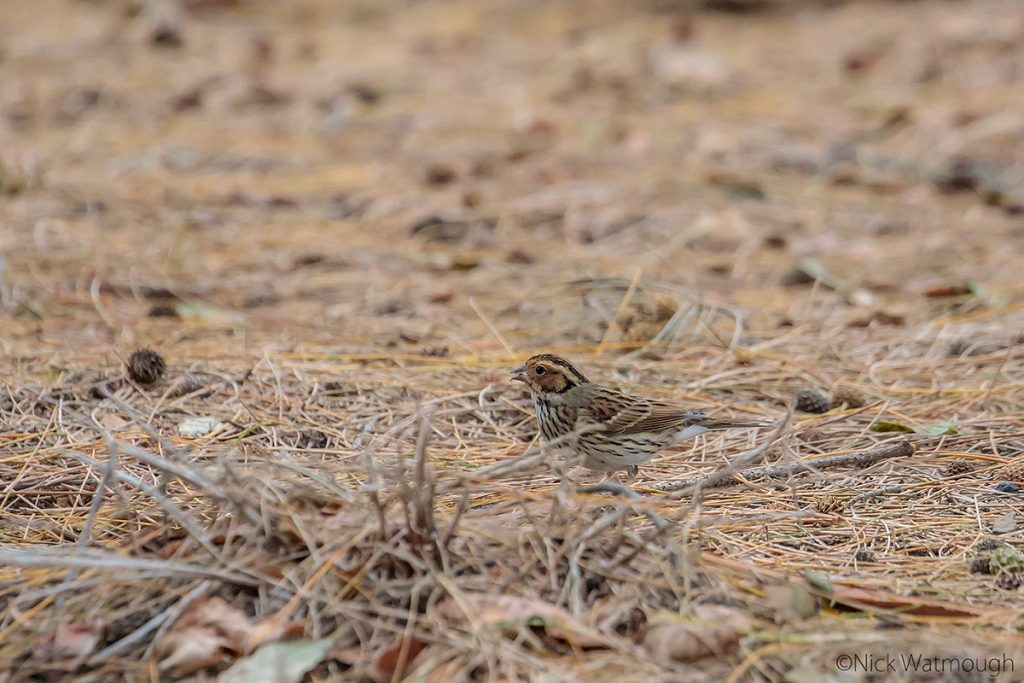

Walking to end of the strip we found a few more Song Thrushes and Chiffchaffs before turning back and bumping into a visiting birder from Gran Canaria who had seen a Yellow-browed Warbler and gave us directions to the Olive-backed Pipits which had relocated to the other strip.
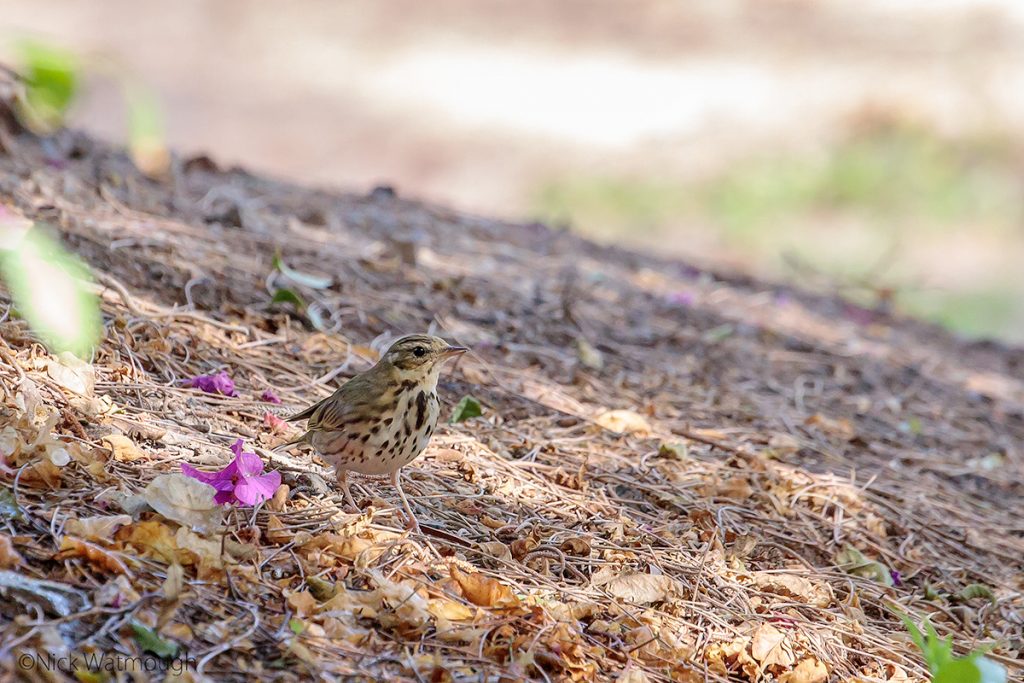

Following his directions we soon located a party of three OBPs which gave nice views despite the footfall through that section of the park. By now the sun was out and with our mission accomplished we set off back off to the North West of the island.
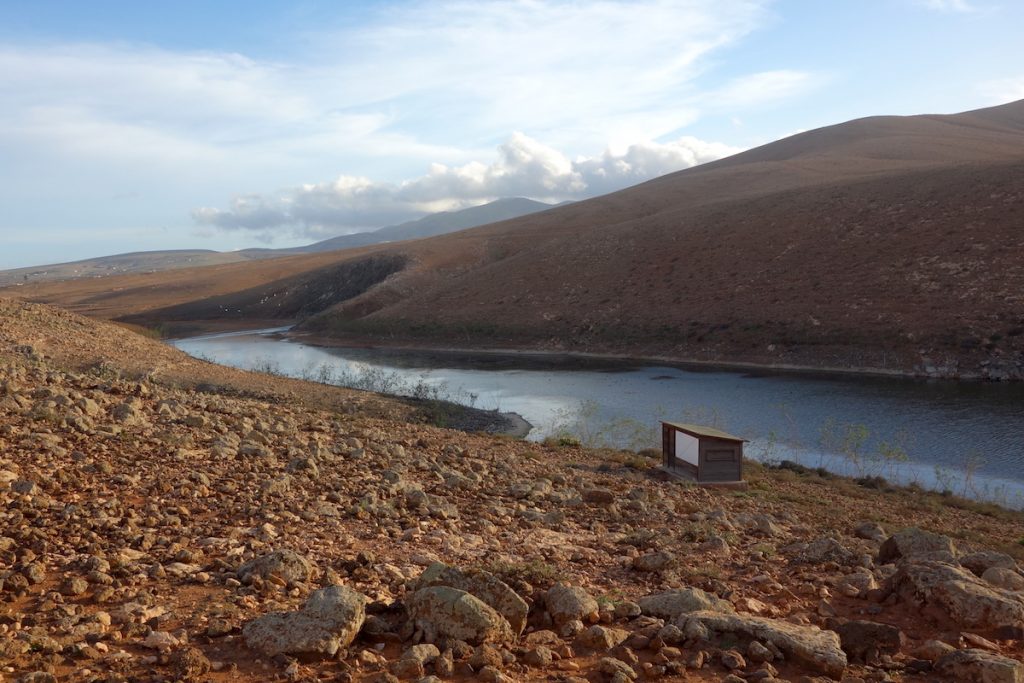

The Embalse de los Molinos is probably the largest stretch of fresh water on Fuerteventura and as such is something of a magnet for visiting birders. As we got out of the car there were swifts, this time Pallid, overhead and a departing birder mentioned a Marbled Teal. We eventually caught up with this duck at the far end of the reservoir along with ca 20 Common Teal, a couple of Mallard and a female Tufted Duck, but it was quitter hard work without in the strong wind and without a telescope. Amongst the other common water birds, Coot, Little Egret and Spoonbill, were a few Greenshank, a couple of Common Sandpipers and a Black-headed Gull. After an hour or so the sun was going down behind the mountains, it was noticeably cooler and time to go. On the way home we chanced upon the very pleasant La Cancela Restaurante in the small town of Tefia where we enjoyed some local specialities. Feeling better for something to eat will stocked up on supplies for the next day at a supermarket between La Oliva and Villaverde before heading back to the apartment for the night.

